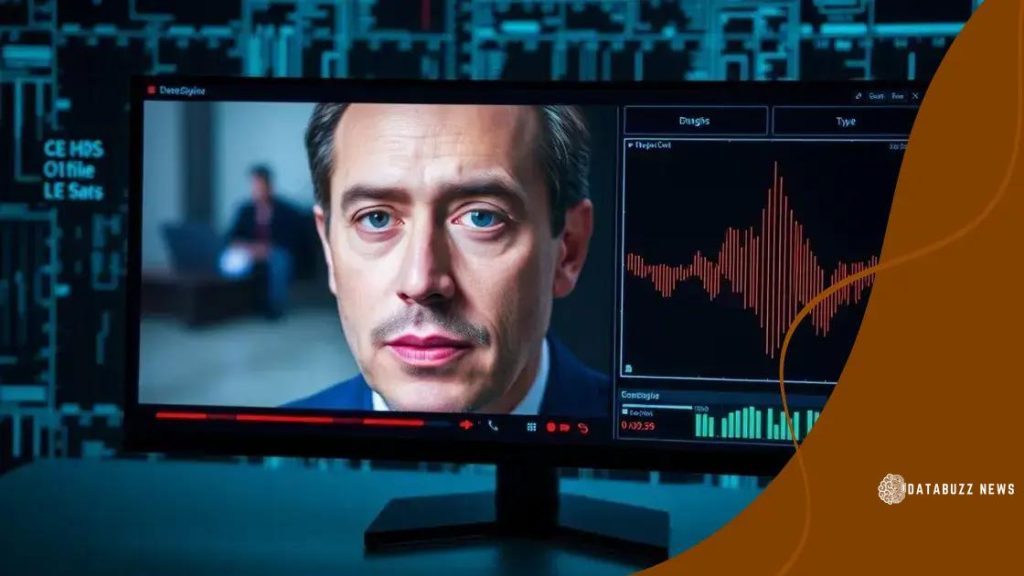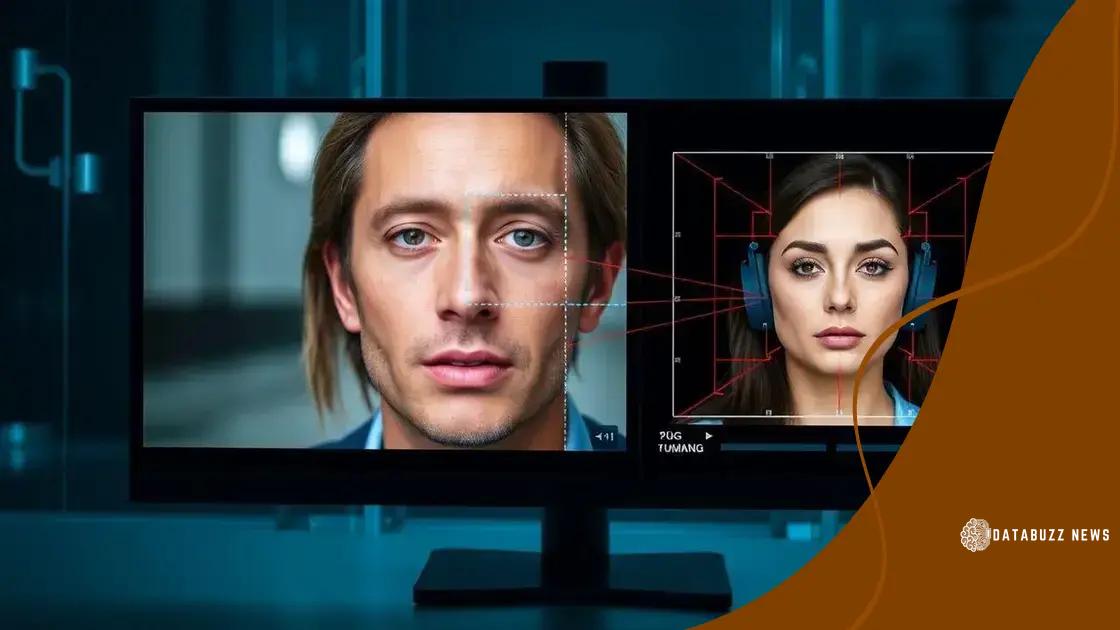Deepfake detection tools in political advertising

Deepfake detection tools in political advertising are essential for identifying manipulated media, enhancing transparency, and maintaining voter trust in the electoral process.
Deepfake detection tools in political advertising are crucial in the fight against misinformation. As technology advances, so does the challenge of discerning truth from fiction in campaigning.
Understanding deepfake technology
Understanding deepfake technology is essential in today’s digital landscape. This technology can create incredibly realistic videos that manipulate appearances and voices. As it becomes easier to produce, recognizing deepfakes is increasingly critical, especially in political advertisements.
What is Deepfake Technology?
Deepfake technology uses artificial intelligence to generate fake content that mimics real people. It relies on machine learning algorithms to analyze and replicate the way someone looks and sounds. This innovation presents both creative opportunities and serious challenges.
How It Works
The process behind deepfakes involves two main components: deep learning and neural networks. These systems ingest large amounts of video data to learn how to imitate the facial expressions and vocal tones of an individual. The result? A convincing imitation that can mislead viewers.
- Deep learning models analyze facial movements.
- Neural networks generate new content based on learned patterns.
- Video editing tools combine these elements into coherent video.
- Real-time processing can further enhance realism.
It’s important to remember that the same technology can be used for good and bad. While it can create entertaining content, it can also spread harmful misinformation. Recognizing and combating deepfakes requires strong detection tools.
As we venture deeper into this subject, grasping the implications of deepfake technology is crucial for understanding its impact on our society. This involves not only technology but also ethics and responsibility in its use.
Importance of detection tools in politics
The importance of detection tools in politics cannot be overstated, particularly as deepfake technology evolves. These tools play a crucial role in identifying manipulated media that can spread misinformation and impact public opinion.
Why Detection Tools Matter
With misinformation increasingly being used in political advertising, detection tools help ensure that voters receive accurate information. They empower fact-checkers and media organizations to verify the authenticity of content.
Key Benefits of Using Detection Tools
Utilizing effective detection tools provides several advantages:
- Enhances transparency in political campaigns.
- Helps in maintaining trust among voters.
- Supports the media in responsible reporting.
- Protects democratic processes from manipulation.
Moreover, these tools can quickly analyze videos and identify anomalies, making it easier to spot deepfakes. The faster we can detect these fake videos, the better we can combat misinformation campaigns.
As technology continues to advance, the need for detection tools is becoming more critical. By leveraging AI and machine learning, these tools can become even more sophisticated, improving their accuracy and effectiveness. Investing in these technologies is essential for safeguarding the integrity of political discourse.
Techniques used for deepfake detection

Understanding the techniques used for deepfake detection is key to combating misinformation. These methods leverage cutting-edge technology to analyze videos and identify signs of manipulation effectively.
Analyzing Visual Cues
One primary technique involves scrutinizing visual cues within the video. Detecting irregularities in facial movements or mismatches between lip movements and audio can reveal alterations. These indicators help software discern genuine content from fabricated videos.
Audio Analysis
Another significant aspect is analyzing audio. Artificial intelligence can compare audio patterns, looking for inconsistencies between a speaker’s known voice and what is presented in the video. This technique is crucial for identifying deepfakes that primarily manipulate speech.
- Detecting unusual intonations or speech rhythms.
- Analyzing background noise consistency.
- Comparing voice samples against databases of known voices.
- Leveraging deep learning for continuous improvement.
Moreover, machine learning plays a crucial role in enhancing detection techniques. By training models with large datasets of both real and fake videos, software can learn to classify content accurately over time. These algorithms continue to improve as they receive more data, allowing them to stay ahead of evolving deepfake technology.
Using a combination of these approaches gives a comprehensive picture of video integrity. As technology progresses, the fight against deepfakes becomes more advanced, making it essential for media and technology companies to adopt these techniques for effective monitoring.
Case studies: effective tools in action
Examining case studies on effective tools in action highlights how deepfake detection technologies successfully combat misinformation in political advertising. These examples demonstrate practical applications and real-world impact.
Case Study 1: Media Companies
Several media companies have implemented detection tools to verify the authenticity of videos before airing them. For instance, a major news network used specialized software to analyze a controversial political ad. The tool detected inconsistencies in facial movements, proving the ad was manipulated.
Case Study 2: Social Media Platforms
Social media platforms also play a vital role. One popular platform integrated an AI-based detection tool that scans uploaded videos for signs of deepfakes. Upon detecting potential fake content, the system flags it for review. This process has successfully reduced the distribution of misleading political ads.
- Improved user awareness of manipulated content.
- Real-time detection leads to faster responses.
- Research indicates a decrease in user engagement with flagged videos.
These tools not only help identify fake content but also educate users about recognizing deepfake technology. By showcasing these case studies, we see how collaboration between technology developers, media firms, and social platforms creates a stronger defense against misinformation.
Furthermore, as these technologies evolve, the effectiveness of these tools continues to improve. Each successful case bolsters confidence and demonstrates that while challenges remain, the fight against deepfake misinformation is becoming increasingly robust.
Future of political advertising with AI
The future of political advertising with AI is poised to transform how campaigns reach and engage voters. As technology advances, political strategies will increasingly rely on artificial intelligence to enhance effectiveness and precision.
Enhanced Targeting
AI offers improved targeting capabilities that allow campaigns to reach specific demographics based on their preferences and behavior. This targeted approach can increase the relevance of ads seen by voters. For instance, AI algorithms analyze data to identify potential supporters and customize messages that resonate with them.
Creative Content Generation
Additionally, AI can assist in generating creative content at scale. Political ads can be tailored swiftly through AI, producing versions suited for various audiences. For example, a single message can be adapted in tone and style for different platforms, ensuring maximum impact.
- AI tools can generate video and graphic content efficiently.
- Customized ads can increase user engagement significantly.
- A/B testing systems refine messages in real-time.
- Campaigns can save time and resources through automation.
With the rise of deepfake technology, political advertising will also face new challenges. As campaigns leverage AI for creative strategies, they must also employ detection tools to combat potential misinformation risks. This dual approach ensures that campaigns remain credible while capitalizing on the benefits of technology.
Moreover, AI’s role in analyzing public sentiment will provide campaigns with critical insights. By gauging voter reactions to specific messages, candidates can adapt their strategies accordingly. This dynamic interaction shapes the ongoing dialogue between politicians and the electorate.
FAQ – Frequently Asked Questions about Deepfake Detection Tools in Political Advertising
What are deepfake detection tools?
Deepfake detection tools are technologies designed to identify manipulated videos and images that falsely represent individuals, helping to prevent misinformation.
How does AI improve political advertising?
AI enhances political advertising by enabling targeted campaigns, automating ad creation, and analyzing voter sentiments for more effective messaging.
Why are detection tools important in politics?
Detection tools are crucial in politics because they help maintain transparency and trust by ensuring that voters receive accurate and reliable information.
What challenges do campaigns face with deepfakes?
Campaigns face the challenge of combating misinformation from deepfakes while also ensuring their own content remains credible and trustworthy to voters.
